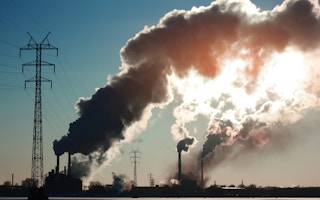Europe has a strong tradition as a leader in the fight against climate change. Lately, however, the continent has reached an ideological impasse over how to address the problem, with environmental sustainability and growth often portrayed as being mutually exclusive. If Europe is to remain an environmental leader, as well as a center of innovation and competitiveness, it will have to abandon its ideological rigidness and embrace realistic, pragmatic solutions that can deliver environmental benefits without sacrificing economic development.
To continue reading, subscribe to Eco‑Business.
There's something for everyone. We offer a range of subscription plans.
- Access our stories and receive our Insights Weekly newsletter with the free EB Member plan.
- Unlock unlimited access to our content and archive with EB Circle.
- Publish your content with EB Premium.
The challenges posed by climate change are real, and the consequences of inaction are impossible to ignore. At the same time, there is a growing demand for energy and a desperate need for a long-term exit from the ongoing economic crisis. There is no single, easy solution that addresses both of these imperatives. Reining in global warming while ensuring economic growth will require a balanced portfolio of solutions, including renewable energy and increased energy efficiency. Essential among such solutions is carbon capture and storage.
CCS technology captures carbon dioxide at the source of its emission, compresses it, and stores it permanently underground. In doing so, it provides an important bridge between our modern economy, which relies heavily on carbon-intensive fossil fuels, and a future in which CO2 emissions are greatly reduced. This provides the means for maintaining a competitive industrial sector while simultaneously combating global warming.
To be sure, as with any innovation, there are questions about the technology’s viability. Some question the scale of the investment needed to install and maintain the systems necessary for capturing and storing CO2. It is important to note, however, that these costs pale in comparison with the far greater costs of reducing CO2 emissions without CCS. According to the International Energy Agency, for example, a ten-year delay in deploying CCS would increase the cost of decarburizing the power sector by €750 billion ($880 billion).
The United Nations Intergovernmental Panel on Climate Change has been unequivocal in its insistence that reducing CO2 emissions and diminishing dependence on fossil fuels is more urgent than ever. It has made it clear that CCS, the only technology that can capture at least 90 per cent of the CO2 emissions from the world’s largest producers, must be a part of the solution.
“
Europe cannot afford to lag behind. Energy-intensive industries directly support four million jobs across the continent. Investing in CCS would help preserve Europe’s economic base by securing and creating jobs and protecting vital industries.
Beyond Europe’s borders, governments and businesses are already forging ahead. In Canada, the world’s first full-scale CCS project, Boundary Dam, came onstream in October 2014, proving that the technology is viable and ready to be deployed. The United Arab Emirates has initiated the world’s first large-scale CCS project in the iron and steel sector. China continues to show great interest in the technology, and is collaborating with the United States to develop its CCS capabilities.
Europe cannot afford to lag behind. Energy-intensive industries directly support four million jobs across the continent. Investing in CCS would help preserve Europe’s economic base by securing and creating jobs and protecting vital industries. It would help to realize a vision of Europe that supports both sustainability and growth – a vision that is clearly in line with European Commission President Jean-Claude Juncker’s priorities of creating jobs, sustaining growth, and developing a competitive energy union.
The continent’s largest petroleum companies, and equipment suppliers, are ready to invest what is needed to reduce CO2 emissions. But, in order for that to be possible, realistic policies and strategies are needed.
CCS has been recognized at the highest political level as a part of the European Union’s 2030 Climate and Energy framework and the European Energy Security Strategy. But it is time to translate recognition into concrete action. That, in turn, requires investment incentives, improved carbon pricing, and an upgrade to the emissions trading system. A game-changing solution presupposes substantial political will; it is essential that European leaders show that they know what needs to be done.
Sustainable growth need not be an oxymoron. But to achieve it, Europe must overcome the ideological stalemate that is paralyzing the environmental debate. To reconcile our environmental priorities with continued growth, we must act realistically, pragmatically, and – above all – immediately.
Graeme Sweeney, former Executive Vice President at Royal Dutch Shell, is Chairman of the Advisory Council of the European Technology Platform of Zero Emission Fossil Fuels Power Plants.
Copyright: Project Syndicate, 2015.
www.project-syndicate.org











